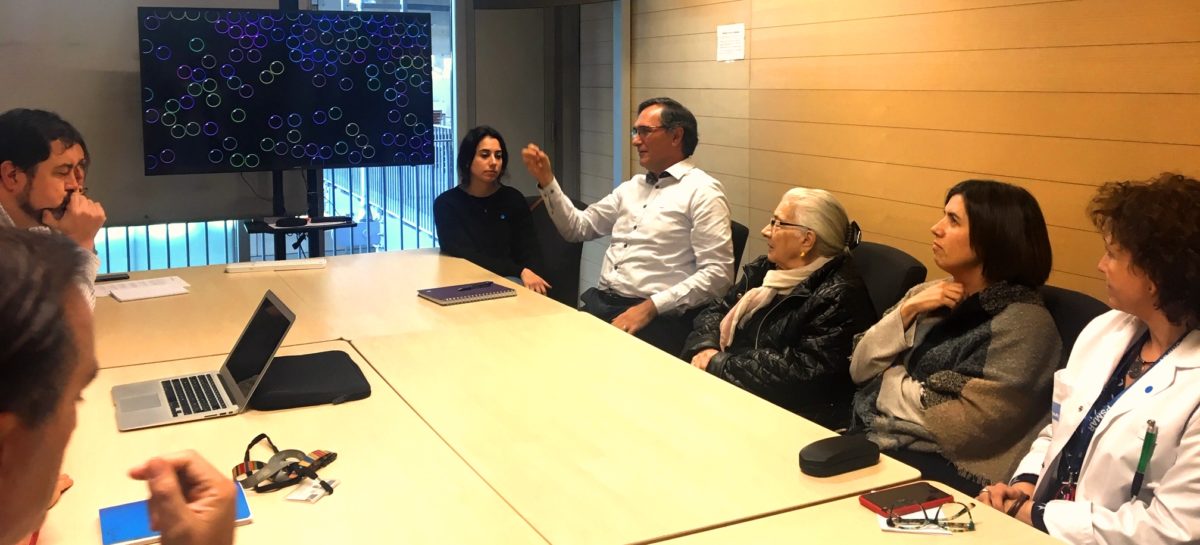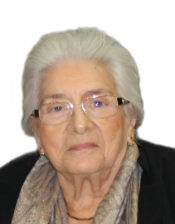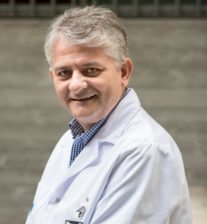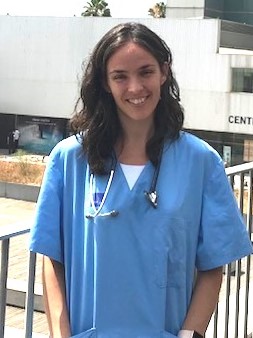‘Responsible research and innovation’ (RRI) is a concept that has gained a lot of support lately across Europe. It is about making science socially responsible, and among other things it implies taking society into account whenever possible – from the moment of the conception of the research project to its implementation and dissemination. And ‘taking it into account’ means not only informing the citizens, but also consulting them, engaging them and even co-creating together with them.
In the case of biomedicine, this implies putting patients at the center of the research. In this context, the Hospital del Mar Medical Research Institute (IMIM) organized the event “Let’s take a step further” on January 21 at the Biomedical Research Park of Barcelona (PRBB). The event was co-organised together with the Catalan Health Quality and Assessment Agency (AQuAS) and the Department of Health.
“Putting patients at the center of the research“
Paula Adam, responsible for the research area in AQuAS, opened the event talking about the why, how and when of citizen participation in research. She then gave way to four groups of researchers who explained to the audience – some 60 people among research staff, patients and medical and nursing staff – various experiences with citizen participation that have been organised at the IMIM. You can read more about these experiences in the Catalan version of this article.

Subsequently, the participants were divided into groups to discuss these experiences and find common points among them, as well as challenges and possibilities. Some of the conclusions that arose from sharing these experiences were:
- All had taken place thanks to individual motivations of researchers, who wanted to know the interests, needs, challenges and problems of users. After hearing these inspiring experiences, the consensus was to work to create an institutional strategy that allows grouping all experiences.
- It is better to speak of users rather than patients and it is important to also include family members.
- While most users are passive, there are some who ask questions, and a small percentage that contributes ideas. That is, there are some motivated users. It is necessary to understand their concerns, those of the professionals and see what common things there are.
- Users do not have enough training or information, and they do not know where to find it. Professionals, meanwhile, either do not know how to convey research results to the public or they don’t find the space and the time to do it.
- Integrating the user as one member of the research team involves a cultural change, a breakdown of the hierarchical and paternalistic relation between doctor/researcher and patient. It does not only consist on recruiting patients, but on listening to their demands and seeing if they can be included and how. This cultural change also needs a structural change. Training and support are needed both for professionals and for users.
- The concept of “expert patient” is complicated, because it is not very representative of the patient population.
- It is essential to give someting back to patients, telling them what their participation has been useful for.

The participants also made proposals for concrete actions on how to involve patients and the population in the research that takes place at the IMIM. You can read about some of these proposals in the Catalan version of the article.
In first person
Some of the participants, with different profiles, tell us about their experience.

“I participated because I have always thought that the user of the Public Health System does little to keep science going. We are only recipients and I do not like this position. I think that this meeting has been very good for exchanging ideas and making a plan so that the patients are, at the same time, receptors and drivers of new research and treatments.” – Ester Villar, patient

“I believe that it is essential to detect what our patients think in relation to their participation in research projects, and give them training if they consider it necessary, so that they can participate as direct agents. In a word: empower them. On the other hand, I also believe that the pharmaceutical industry must incorporate patients in the different stages of the investigation of their new drugs: from design to execution.” – Julio Pascual, medical doctor and researcher

“It was a fruitful day. Not only because specific ideas emerged about how to get the research done by doctors and researchers to the patients (which is certainly necessary), but because it implied revealing the need for a cultural change in order to do it. Changing the term patient for user, which also includes relatives, and the need not only to recruit patients, but to listen to them and understand their needs are good examples of this cultural chance. I liked to hear first hand about the experiences of peers from other specialties who are already working together with their patients by involving them in research projects and demonstrating the different links that may exist between researchers and users” – Judith Marin Corral, doctor and researcher

“I believe that the involvement and active participation of patients and citizens in general in research is fundamental, favoring a greater knowledge of the meaning and benefits for society of these research activities, while facilitating the exchange of experiences between the patient and the researchers. As a doctor, a researcher, but also, and especially as a patient, since we are or will be patients at some point in our lives, I was interested in this day because I am convinced that these initiatives are necessary to continue advancing for a better knowledge of biomedical research in a more open, participatory and social way.”– Miguel Angel Mayer, medical doctor and researcher.
You can read more about how this event came to be and the context in which it took place in the Catalan version of the article.







